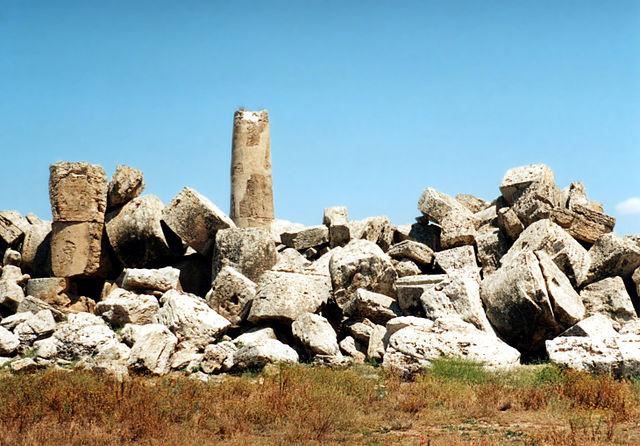

|
Should ruined works, like Temple G at Selinunte, be restored? Most practicing archaeologists today would answer this question in the negative.
Aside from questions of cost, practicality, and technical capability, when a structure is rebuilt, that process destroys the original physical context (relationship between physical elements) of the site. Rebuilding creates an interpretation, but precludes the possibility of creating a more accurate interpretation in the future.
In addition, if the site is currently protected by burial, the process of excavation exposes the features of the structure to all manner of physical deterioration by natural processes (wind, sun, rain), man-made pollutants (smog), and the very procedures (physical, chemical) undertaken for the structure's preservation. Therefore, for scientific purposes, it is considered far better to leave the site alone, and to study it by non-invasive procedures (imaging) as much as possible. In this way knowledge is gained in the present, and the site is preserved for people to gain additional knowledge in the future.
As one visits restored sites - whether at Lascaux, the tombs in the Valley of the Kings, or the Parthenon, examples of all these points become evident. One sees restorations, formerly thought reasonable but now known to be incorrect, and severe damage that has been caused by simple exposure to the elements, as well as by inadequate restoration techniques which were once considered state-of-the-art. Indeed it is fair to say that a great deal of time and effort in conservation archaeology is now devoted simply to undoing the mistakes of the past. It is also inevitable that we will make mistakes in the present, which will have to be undone by archaeologists in the future.
In view of these considerations, can anything be said in favor of excavation, restoration, or even rebuilding? There is a humanistic side to archaeology, which I believe has claims of merit equally weighty as those on the scientific side. It is the challenge of archaeology, however difficult, to satisfy both.
Artifacts from the past, whether Chinese bronzes or ancient Greek statues, are studied and displayed in museums as much as for their artistic and aesthetic value as for the increased knowledge they bring. The benefits of putting a beautiful Greek vase on public view can hardly be realized if that vase is kept buried underneath the earth; nor can the benefits to the human spirit, of being able actually to walk about the Parthenon, be realized by a virtual-reality computer map.
I believe that contemporary archaeology must now take care. In its zeal to preserve the past for the future, it must not impoverish the present, nor deny to all people the incalculable spiritual benefit of direct and unmediated contact with the inspiring achievements of the earlier peoples who have gone before us. Their works are a most precious legacy - certainly to be preserved with all our wisdom, yet equally to be experienced for the enrichment of all our lives.

|